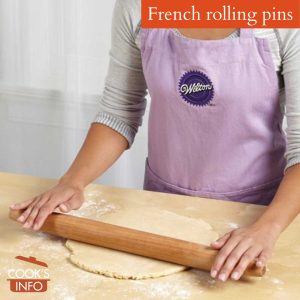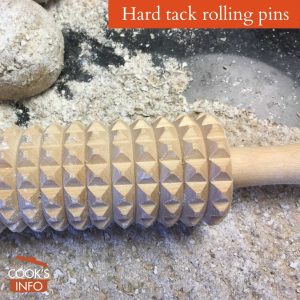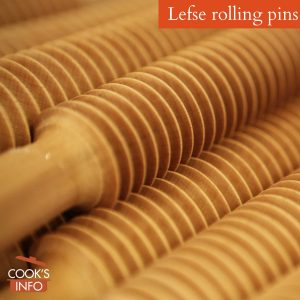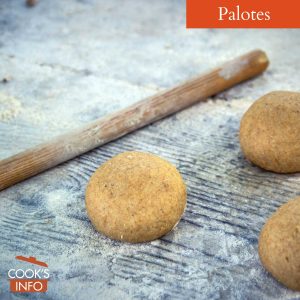
Rolling pins. Rebecca Matthews / pixabay.com / 2015 / CC0 1.0
Rolling pins are long cylinders used to press out dough evenly and smoothly.
They are primarily used for rolling out dough for pastries, such as pies and cookies, but they can also be used for rolling out bread-type dough for items such as cinnamon rolls and pizza, and for rolling out pasta dough.
The construction of rolling pins
In the English-speaking world, rolling pins are generally about 25 to 40 cm long (10 to 15 inches), and about (5 to 8 cm in diameter (about 2 to 3 inches).
They can be made from aluminum, ceramic, glass, marble, plastic (nylon or polypropylene), stainless steel, or wood — specifically, hardwood. Hardwood has been and is still the most common material. In fact, the German word for rolling pin is “Nudelholz”, with “holz” meaning “wood.”
Rolling pins may or may not have handles at each end for turning them. Some handles are on shafts, allowing them to stay in place while the pin rolls. Most handles, though, are fixed, so that they roll with the pin. Wooden ones with painted handles on the end sometimes have the problem of the paint flaking off into the food you are working with.
Some people prefer ones without handles — they say that by having their hands right on the pin, they can sense better right through the pin the state of the dough and its thickness.
French ones often don’t have handles, but are tapered instead at the ends. Some people prefer these because they can be more easily spun or rotated while rolling, making it easier to make a better circle of dough — you can just swivel them on one end.
Heavier rolling pins do some of the work for you, meaning you have to press and lean less. Lighter ones actually require more work to roll. Really heavy rolling pins that weigh up to nearly 2 kg (about 4 pounds) can be great for rolling out yeast doughs, but harder to work with for pastry.
Marble ones can be chilled first before using them on pastry. They will hold the “chill”, thus keeping your pastry dough colder as you are rolling it out and causing it to stick less to the rolling pin. Some people store their marble ones in the freezer, so they are always ready to go.
Some rolling pins are hollow in the centre, enabling you to fill them with ice cubes or ice water to achieve the same effect as chilled marble. Some feel, however, that these stick more than even wooden rolling pins, because condensation sometimes forms on the outside.

Depression glass rolling pin with cork stopper. Tangerineduel / wikimedia / 2019 / CC BY-SA 4.0
Care of wooden rolling pins
Wooden rolling pins shouldn’t be washed: just scrape clean with the back of a knife, wipe with a damp cloth, then let dry well before being put away.
Alternative uses
Rolling pins can be used to crush things such as crackers, nuts and peppercorns, and to flatten pieces of meat. Place items such as peppercorns in a sturdy plastic bag first. Be aware, though, that even through a bag, some wooden rolling pins can get pockmarked when being used on hard items such as peppercorns or nuts.
Substitutes
You can use a wine bottle in a pinch. Make sure it’s not chilled or condensation may form and make your dough sticky. Make sure as well that the outside is clean.
Literature & Lore
Julia Child preferred French-style rolling pins.
See also
Pastry cloth; pastry frame; pastry mat.






